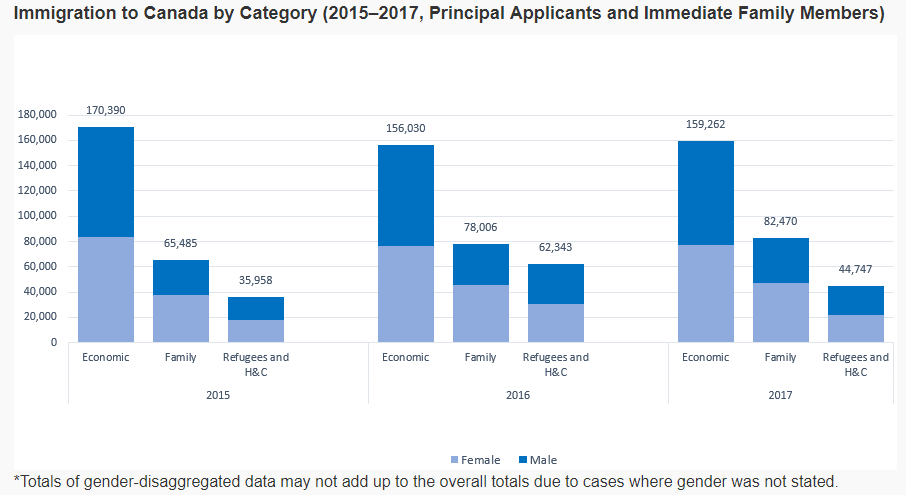Canada wants to take in more than 1 million new immigrants in the next 3 years

Joggers run across the Humber Bay Arch Bridge in Toronto, Canada.
Image: REUTERS/Mark Blinch
Stay up to date:
Migration
Want to live and work in Canada? That dream could become a reality now the government has announced plans to accept more than a million immigrants in the next three years.
In his 2018 Annual Report to Parliament on Immigration, the country’s immigration minister Ahmed Hussen revealed plans to admit as many as 1,080,000 new permanent residents between 2019 and 2021, with the upper target for 2021 being 370,000.
This equates to 84,000 more people than the 286,000 that were welcomed as permanent residents in 2017.
Introducing the report, Hussen, who originally came to Canada as a Somali refugee, said: “Immigrants and their descendants have made immeasurable contributions to Canada, and our future success depends on continuing to ensure they are welcomed and well-integrated.”

According to the report, one in five people living in Canada was born outside the country, while more than six million new immigrants have arrived since 1990.
Ageing population
Immigration is seen as key to helping strengthen the Canadian economy. With the average immigrant being young, it can help to tackle the challenges of an ageing population. The report says the worker-to-retiree ratio is predicted to reach 2:1 by 2036, compared to 4.2:1 in 2012.
Just under half (48%) of the highest target of admissions for 2021 will come under Economic Programs - to fill skills gaps in the labour market.
“With an ageing population and low fertility rates, immigration plays an important role in ensuring that Canada’s population and labour force continue to grow.
“Growing immigration levels, particularly in the Economic Class, will help us sustain our labour force, support economic growth and spur innovation.”
In the World Economic Forum’s Global Competitiveness Report 2018, Canada ranked 12th overall, with a perfect score of 100 for macroeconomic stability, as well as coming top of the countries with the most diverse workforces.
Refugees resettled

More than half the immigrants admitted in 2017 came under Economic Class programmes, while 44,000 were resettled refugees, protected persons and people admitted under humanitarian, compassionate and public policy considerations.
The 2019–2021 Immigration Levels Plan includes greater targets for the number of refugees and displaced people the country will admit, ranging from 43,000 as a low target in 2019, to 64,500 in 2021.
Canada is seen to be a world-leader in terms of its immigration policies, with the UN’s High Commissioner for Refugees, Filippo Grandi praising the country for its “extraordinary generosity, openness and willingness” to help displaced people.
But Canada’s new pledge is just a drop in the ocean compared to the numbers who need to be resettled. The UNHCR said the total number of people who were forcibly displaced reached a record 68.5 million in 2017, while the number of refugees needing to be resettled had climbed to 1.19 million by the end of 2017.
Don't miss any update on this topic
Create a free account and access your personalized content collection with our latest publications and analyses.
License and Republishing
World Economic Forum articles may be republished in accordance with the Creative Commons Attribution-NonCommercial-NoDerivatives 4.0 International Public License, and in accordance with our Terms of Use.
The views expressed in this article are those of the author alone and not the World Economic Forum.
Related topics:
Forum Stories newsletter
Bringing you weekly curated insights and analysis on the global issues that matter.
More on Jobs and the Future of WorkSee all
Babak Hodjat
July 11, 2025
Majlinda Bregu
July 9, 2025
Shakthi M Nagappan
July 7, 2025
Steffica Warwick
July 3, 2025
Ibrahim Odeh and Oliver Tsai
July 2, 2025





